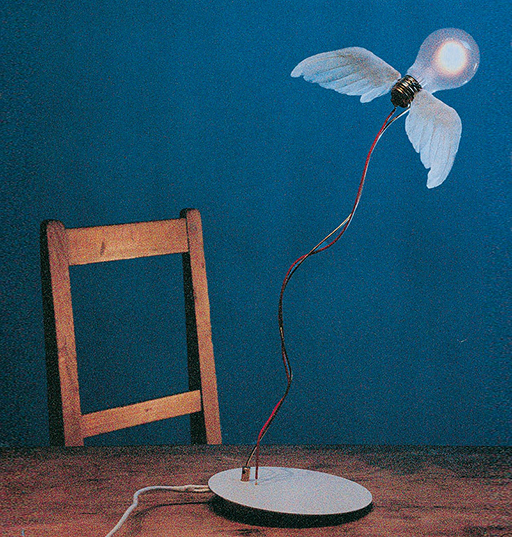Tuesday, March 12, 2013

Two words that probably describe Maurer’s designs the best are whimsical and magical. His works always seem to have a narrative about them and a certain ability to draw you in. Facing Maurer’s designs it is easy to forget that the object you are encountering is a lamp or a lighting device / installation. The infinite imagination present in Maurer’s work is not the solely thing he should be praised for. Maybe even more the ability to create such work and still keep it as simple and minimalistic as possible, always trying to reduce the material usage to the bare necessity. What makes it possible for Maurer to create in this manner, is also the fact that he was a pioneer in applying contemporary discoveries in light technology to his designs. First with the introduction of the halogen bulb and later the LED as well.
Ingo Maurer’s work is thus characterized with a wit, humor and easiness only a light magician like him can achieve.
Ingo Maurer [born May 12 1932 in Reichenau Germany] is an industrial designer who devoted his career to light, light design and light installations.

One of the examples of such wittiness is certainly his work Lucellino, the standing lamp from 1992. The usage of the material is visibly scarce, yet only a bulb, a wire, a metal stem and a pair of goose feather wings are enough to create this almost alive-like lamp creature.
Seeing Lucellino in the Stedelijk it was evident that it will be my item of choice, as I, myself, have always been inexplicably attracted to light and light emitting bodies.
What also attracted me to Lucellino was its animalistic quality of embodying a bird-like creature (hence the name – luce = light, ucellino = small bird ) which made it easy for me to connect with this object.
Its playful charm makes it more than just a lamp but rather an object that almost has an intelligence of its own.
Friday, March 8, 2013
‘Bibibibi’, one of the later works by Ingo Maurer, was a cheeky reaction on the modernist movement of the early eighties. Surrounded by the slick minimalism of artists like Donald Judd, Dan Flavin and Frank Stella, Maurer wanted to create a lamp that was exactly the opposite. Bibibibi is not only absurd in its image, but also in the material it is build of. The plate consists of porcelain, the legs are plastic, the bird’s body is metal and the top is fully made out of soft feathers. Especially the porcelain is a unconventional material to use with lamp-making and it makes the lamp almost afunctional, even though the light of the lamp, the bulb itself, is one of the most standard. The anti-functionality – the case that it can hardly be moved – makes the strongest comment on the minimalistic design of the beginning of the eighties, which was very much focused on the ability to use the object in every way desirable. Of course also the suggestion of some kind of narrative makes this lamp stand out compared to its contemporaries. It makes us wonder: what kind of bird does it represent? Is ‘bibibibi’ the sound it would make? What has the bird been through? Was there a certain background for Maurer to make it? Is there even a story behind it?
In my case it particularly reminds me of a character from one of the most famous Dutch children books, called ‘Pluk van de Petteflet’ by Annie M.G. Schmidt. This character is also a bird, but a rare species, which the people call ‘the Krullevaar’. Because this bird is so exceptional, the director of the city’s museum wants to make sure it will be in his collection, but then stuffed. The protagonist, Pluk, naturally saves the Krullevaar from this sad ending. However, this is exactly what happened to ‘Bibibibi’, he or she eventually ended up in a museum. Maurer initially succeeded in creating a lamp that was absurd enough to differ from the rest, but exactly because of this it landed in the Stedelijk, which only increases the lamp’s anti-functionality. This finishes Maurer’s wish to create something unique: the bird is caged and so is the design.



